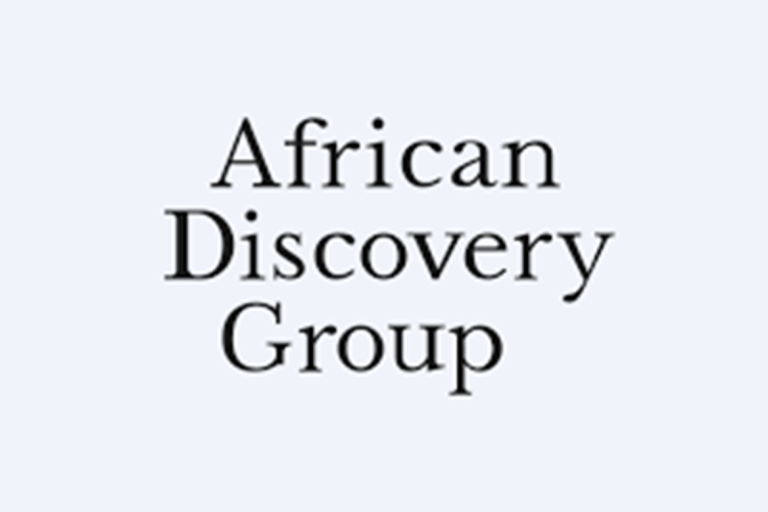- Hill’s injury is a reminder of what a spectacular yet complex career he’s had to date.
- Tyreek Hill’s contract could make it very hard for the Dolphins to keep him in 2026.
- Hill’s numbers and career are now paused, but his Hall of Fame clock continues to wind down.
As Tyreek Hill was torqued out of bounds Monday night, his left knee winding up in a highly unnatural anatomical position, it was only natural to wonder if he’d played his final snap in the NFL.
I’m quite obviously no doctor, but anyone who’s watched or covered the league for an appreciable amount of time gains a pretty good understanding of the ramifications certain injuries entail.
In the near term, the Miami Dolphins superstar is facing months – at a minimum – of grueling, lonely rehab. Beyond that? Even if Hill’s body responds, he could be de-cleated again by the business of football and maybe even its politics.
Hill’s career, employment and perhaps even his legacy could very well hang in the balance as he tries to come back from this major setback.
How bad was Tyreek Hill’s injury?
As he lay on the sideline after landing awkwardly following a hard hit against the New York Jets on Monday night, Hill’s left leg looked as if it had been improperly attached to his body. It was a gruesome looking sight for one of the league’s most physically dominant players and one sure to keep him out for a lengthy period.
After confirming Hill’s knee had been dislocated Monday, Miami coach Mike McDaniel revealed more details Tuesday afternoon after the wideout underwent surgery.
“Several ligaments, including the ACL, are part of the dislocation,’ said McDaniel while confirming the obvious − Hill won’t play again in 2025. (He was officially placed on injured reserve Wednesday.)
Not great. Yet there were also apparently some very evident silver linings even after Internet doctors had tried to diagnose the extent of the damage in the aftermath of the injury.
“I think there was some competitive greatness from our doctors for critical execution in a very timely fashion that did very well for the injury for him,” said McDaniel.
“The medical care was topflight when we absolutely needed it, in its most absolute necessity.”
Translation? McDaniel confirmed that being able to postpone the surgery until Tuesday was indeed a good sign and that Hill didn’t appear to suffer any nerve damage in addition to the structural nature of the injury. The fact that he apparently won’t need multiple operations is another encouraging development.
Truly great. But …
Hill will be 32 when the 2026 season starts. It only takes one bad injury to end NFL careers that inherently hang by a thread no matter the quality of the player. And for a wideout on the small side – Hill is listed at 5-10, 191 pounds – he has always been reliant on his world-class speed and quickness to be an impact performer. He’s not going to suddenly grow five inches and add 25 more pounds of muscle to reinvent himself as a possession receiver or situational red-zone target. Furthermore, Hill recently admitted he’s only now begun to grasp Miami’s playbook.
‘I didn’t understand the offense for the first three years of me being here,” he said during training camp.
Not a helpful admission to potential future employers even if still a testament to the heretofore physical gifts that have allowed Hill to be such a dominant and productive player for the Dolphins regardless. And there’s going to be a steep burden of proof he’ll ever be that caliber of player again given the way reconstructed knees tend to rob older players of their wheels.
Hill may not be facing an Everest-level climb amid the lengthy recovery he faces. But an ACL injury alone usually sidelines NFL players for nine months to a year, and they typically don’t feel fully healed until the season after they return. Hill’s dealing with more than an ACL, to say nothing of Father Time’s hourglass for a player who was already on the back side of his career.
How does Tyreek Hill’s contract impact his future?
Whether or not Hill plays again in the NFL, it’s a very good bet Monday was his final game with the Dolphins.
The three-year, $90 million extension he’s playing on is scheduled to run through the 2026 season. Yet Hill is owed $36 million next year, including a $29.9 million base salary that’s triple his 2025 figure. None of Hill’s income for 2026 is currently guaranteed – yet the Dolphins will have to make some kind of decision on him by March given Miami will owe Hill about $16 of that $36 million on the third day of the 2026 league year.
There will be no certainty in March that Hill will even be ready to physically play in 2026, nor at what level that might be no matter how well his comeback bid might unfold. That doesn’t even account for the uncertainty already hovering over this team, McDaniel’s job security seemingly among the most precarious among NFL coaches and obviously not stabilized by a 1-3 start. Prior to the injury, there had already been speculation that Hill might be moved by the Nov. 4 trade deadline.
And when the headaches a player tends to cause (more on that later) pull even or outweigh whatever ability he brings to the table, teams tend to quickly move on.
Even if Miami suddenly goes on a hot streak, wins its first playoff game in a quarter century and hands McDaniel a four-year extension, it’s really difficult to envision a scenario where Hill returns – barring an extraordinary pay cut that very few NFL players are willing to stomach.
Conversely, becoming a free agent in 2026 would be a tricky endeavor for Hill. No matter how good he was and might be again, he’ll nevertheless be an aging receiver trying to rebound from a cataclysmic injury – not the kind of circumstances that lend themselves to multi-year offers or sizable guarantees.
It’s not a pretty financial picture no matter where Hill lands in 2026 … if anywhere.
Is Tyreek Hill a Hall of Famer?
Perhaps it’s something of an insensitive question to ask in this moment. But, admittedly, it popped into my head as I watched Hill being carted to the locker room, smiles and all, and ultimately the hospital Monday night.
One of the league’s more complicated characters is currently facing domestic abuse allegations from his estranged wife. Hill’s problematic history with women was part of the reason he was a fifth-round draft pick (by the Kansas City Chiefs) in 2016. Prior to that, he’d been kicked off of Oklahoma State’s squad, charged in a domestic abuse case for choking and punching his pregnant girlfriend. Hill eventually pleaded guilty as part of a plea agreement.
There was also his infamous traffic stop prior to the 2024 regular-season opener in Miami – the one when police overreacted by dragging Hill out of his car and handcuffing him on the periphery of Hard Rock Stadium … after Hill had done himself few favors given how he interacted with the officer who stopped him for speeding on a crowded Miami Gardens road in the first place.
Hill has also been investigated for child abuse and assault among other legal issues.
Why mention this stuff?
Ask Terrell Owens, who eventually got into the Hall of Fame, though well after his numbers dictated he probably should have. And his shenanigans were basically limited to the field and locker room.
Ask Antonio Brown. He should be celebrated as one of the most dominant receivers in league history, his game adjacent to Hill’s. But nearly every headline Brown has generated this decade has been of the troubling variety as he’s devolved into a controversial caricature.
Perhaps Hill’s copious accomplishments on the positive side of this equation are sufficient to outweigh the concerns over the negatives he’s been associated with. He can be a gregarious character. He’s been generally beloved by teammates through the years and widely credited as a leader in Miami’s locker room.
‘It’s just sad anytime you see someone go down. But a guy of that stature − what he means to the team, what he means to the game of football,’ said fellow Dolphins wideout Jaylen Waddle when asked about Hill on Monday.
‘Just his legacy and everything that he did in his career, it’s always tough.”
Of course, that’s occurred in the context of a team that’s been trying to fix its accountability issues – and that notably includes Hill. He wasn’t voted a team captain in 2025 in the aftermath of his in-game shutdown during Week 18 of the 2024 season, when the Dolphins were getting blown out by the lowly Jets in a defeat that would definitively end Miami’s playoff aspirations.
All of that being said − what a football player Hill has been.
In a survey of his peers conducted by NFL Network last year, Hill was voted the league’s best player coming off a 2023 campaign when he paced the NFL with 1,799 receiving yards and 13 touchdown catches – figures that could have easily been higher had he been healthy in the latter stages of that season.
While it’s been four years since he last played for the Chiefs, Hill was a major factor on their road to dynasty status. He made the 44-yard catch on third-and-15 in the fourth quarter of Super Bowl 54 that sparked K.C.’s comeback win against the San Francisco 49ers and catapulted the Chiefs to their first Lombardi Trophy in 50 years – and first in a period when they’ve won three of the past six (and nearly two others). And he made some massive plays, including a 64-yard TD, in the Chiefs’ 42-36 overtime defeat of the Buffalo Bills in the 2021 playoffs, one of the greatest games in league history.
But his case for Canton is no stone cold lock, not presently anyway.
While there’s little argument that the dynastic Kansas City offense was at its best with Hill – he frequently cleared the field for tight end Travis Kelce, incidentally – it’s also incontrovertibly true that the Chiefs reached, well, “New Heights” after trading him in 2022 and leveraging the draft haul they got in return from Miami into younger, cheaper players who have sustained Kelce, Andy Reid and Patrick Mahomes at their championship apex. Meanwhile? Hill’s Dolphins continue treading water in a sea of mediocrity.
As for his stats? Try 813 catches, 11,363 yards and 96 career touchdowns (including rushing and special teams). They’re fantastic. They’re also going to be stagnant, perhaps permanently.
And remember, Hill plays a premium position, and retired players like Larry Fitzgerald, Steve Smith Sr., Torry Holt, Julio Jones and Reggie Wayne are already queued up for gold jackets. Hill’s peers include Davante Adams, DeAndre Hopkins and Keenan Allen, among others, who already have better numbers than he does, and now those gaps will grow. So does Mike Evans, who also owns a ring – one won at Hill’s expense with the Tampa Bay Buccaneers in their Super Bowl 55 blowout of the Chiefs. Justin Jefferson and Ja’Marr Chase are at the vanguard of the next wave of great wideouts who threaten to equal or surpass Hill. And none of these guys have off-field considerations muddling their résumés.
Hill’s signature touchdown celebration, one typically penalized, is to flash the peace sign at a flailing DB as he smoothly pulls away for his latest quick-strike score.
But now it’s Hill, who seemed to have so much football on the table just days ago, who faces an unfair race to catch back up to an unforgiving league that could say deuces to him at any time.
This post appeared first on USA TODAY










